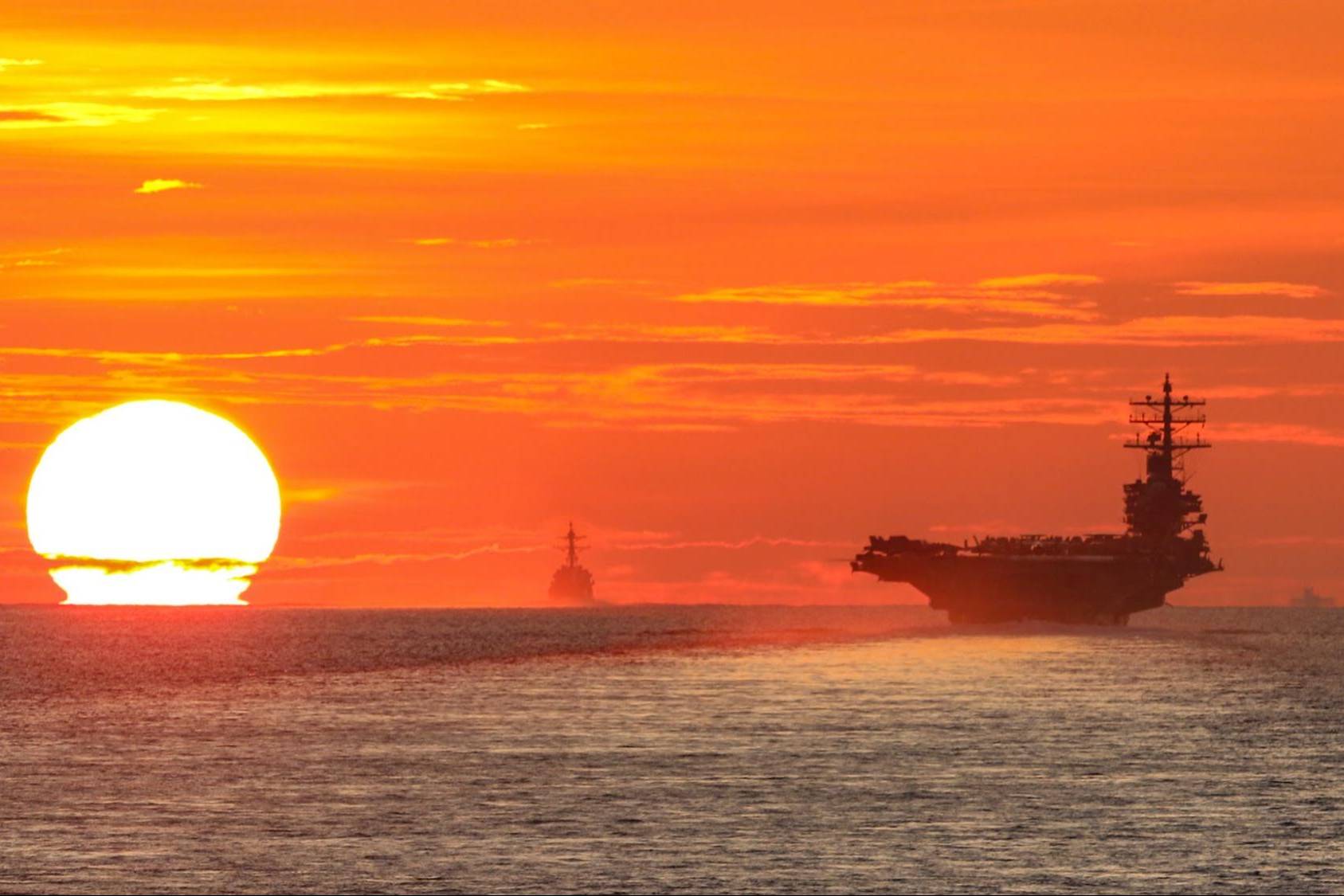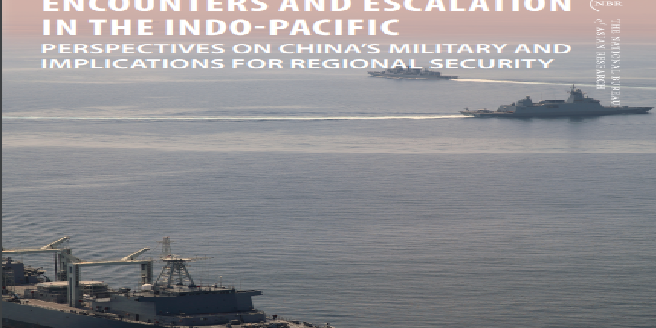Jeffrey Ordaniel
Over the past decade, there has been a growing call for greater rule of law in maritime Indo-Pacific. From Washington, Tokyo and Canberra, to the capitals of Southeast Asia, leaders and policymakers have been constantly stressing the importance of adherence to the principles of international law, and to cooperate, bilaterally and multilaterally to address maritime challenges. The Association of Southeast Asian Nations (ASEAN) has been, year-after-year and statement-after-statement, constantly repeating the same refrain regarding “the need to pursue peaceful resolution of disputes in accordance with the universally recognized principles of international law, including the 1982 UN Convention on the Law of the Sea (UNCLOS).”2 During their first summit meeting, in April 2021, U.S. President Joe Biden and Japanese Prime Minister Yoshihide Suga expressed their shared opposition to “any unilateral attempts to change the status quo in the East China Sea,” and reiterated “shared interest in a free and open South China Sea governed by international law, in which freedom of navigation and overflight are guaranteed,” consistent with UNCLOS.3 But despite the seeming regional consensus, achieving a rules-based maritime order appears farther than ever. This volume gathered expert voices to critically assess issues of maritime law and policy to better understand what drives maritime tensions in the region, and what can be done to reduce them, to achieve greater rule of law.
But why is a rules-based order so desirable and critical for maritime security in the Indo-Pacific?
First, the region is characterized by a large number of enclosed or semi-enclosed water regions, which Article 122 of UNCLOS defines as “a gulf, basin or sea surrounded by two or more States and connected to another sea or the ocean by a narrow outlet, or consisting entirely or primarily of the territorial seas and exclusive economic zones of two or more coastal States.”4 This fact has significant geopolitical implications. It means maritime entitlement dispute would inevitably be a common feature of almost every bilateral relationship in the region. Indeed, every body of water in the Indo-Pacific is contested. The alternative to rules-based management and resolution of these offshore territorial disputes and overlapping maritime entitlement claims is the use of coercion and force.
Second, maritime security is of paramount importance to the economies of littoral states in Asia, and beyond. It is estimated that nearly half of all commercial sea trade is delivered through the region’s waterways. The Malacca Strait alone is traversed by at least 25% of the world’s commercial shipping. In the South China Sea, where multiple states have overlapping claims, the Center for Strategic and International Studies’ ChinaPower Project found that an estimated US$3.4 trillion in trade passed through it in 2016.5 That figure constitutes about 21 percent of global trade that year. There has been no updated study on the matter since, but it is reasonable to expect that trade volume that passes through the South China Sea could have only grown over the past five years. All major economies have stakes in ensuring the safe passage of shipping through the seas of the Indo-Pacific and any interruption would have tremendous consequences to the global economy. Some would argue that trade remains uninterrupted despite periodic tensions. While that may be true, acquiescing to a state’s expansive claim not based on international law is akin to giving that state a lever through which to coerce others in the future by applying rules arbitrarily. In essence, not pushing back is shortsighted.
Moreover, while the region’s maritime spaces contain relatively modest proved and probable hydrocarbon reserves–not really sizable enough to reverse East Asia’s reliance on Middle Eastern energy–littoral states in the region are keen to tap them. For countries like the Philippines and Vietnam, oil and gas resources in their exclusive economic zone and continental shelf are critical for long term energy security. Manila sees resources at the Reed Bank as most viable replacement to its existing Malampaya gas field, currently delivering as much as 20% of the country’s electricity requirements, but is expected to run dry in the coming years.6 The Reed Bank, while clearly inside the Philippines’ exclusive economic zone (EEZ), is also within China’s nine-dash lines, and Chinese coercion has prevented oil exploration since 2011. Meanwhile, some media reports in 2019 and 2020 revealed that Hanoi had to pay around a billion dollars to two foreign energy companies for terminating their South China Sea operations, reportedly because of pressure from Beijing.7 Additionally, the maritime domain provides livelihoods to millions of fishermen. The South China Sea alone accounts for 12% of the world’s annual fish catch.
A rules-based order means lawful maritime commerce will continue without interruption, countries will be able to tap new sources of energy critical for their rapidly growing economies, and the livelihoods and well-being of millions of people in coastal communities will be ensured.
Finally, beyond interstate disputes, there are other significant security concerns associated with the waters of the Indo-Pacific. These include piracy and armed robbery against ships, maritime terrorism, illicit narcotics and human trafficking, pollution and environmental degradation, illegal, unreported and unregulated (IUU) fishing, climate change and rising sea-levels, among many others. Some littoral states in Southeast Asia view these challenges as more urgent that should be prioritized. But many of these transnational problems require interstate cooperation based on international law. This is inhibited by the perception that it may involve some loss of sovereignty, or risks of legitimizing the other parties’ jurisdictional claims, amidst unsettled maritime and/or territorial disputes. For instance, many states are reluctant to establish joint marine environmental protection areas because such may give way for rival claimants to conduct law enforcement or be present in areas already under their jurisdiction, per the current status quo.
Despite the apparent regional consensus on the benefits of a rules-based maritime order, why do tensions continue to rise and the applicability of international rules and norms to the region’s maritime spaces continue to weaken?
The seven other authors of this volume have provided numerous answers, but each fall into one of the following key factors—lack of good faith vis-à-vis international law, inherent weaknesses in regional multilateral mechanisms, and the geopolitics surrounding the so-called great power competition.
First, some countries continue to make excessive maritime claims, even those already declared invalid or without basis under international law by a competent and authoritative international tribunal. In other words, there is a lack of good faith, an important international law principle, vis-à-vis adherence to related international legal regimes.8 In the South China Sea, Beijing continues to insist on its nine-dash lines, a claim outrightly rejected in July 2016 by an arbitration tribunal constituted in The Hague under Annex VII of UNCLOS. China has also been attempting to reverse Japan’s administration of the Senkaku Islands, not through peaceful means such as judicial procedures, but by resorting to coercive maneuvers in the East China Sea
This lack of good faith and blatant disregard for international law can be seen in Beijing’s dispatch of fishing vessels with maritime militia to neighboring states’ EEZ that also fall within the discredited nine-dash lines. It has also been using Coast Guard and other government vessels to put into question the longstanding control and jurisdiction of many Indo-Pacific littoral states over their waters, and to initiate a new status quo. Maritime experts call these actions gray zone operations, activities below the threshold of an armed attack, but consequential enough to achieve security or political objectives. Maritime scholar Jonathan Odom described operating in the gray zone in terms of a black to white continuum. “On the spectrum’s ‘white end,’ the mere existence or presence of military forces would not constitute a use of force. On its ‘black end,’ dropping bombs, launching missiles, or landing combat forces ashore would constitute a use of force.”9 In between the two ends are a wide range of activities characterized as ‘gray zone.’
Regional countries have been struggling to respond to these types of activities. For U.S. allies in the region, Washington’s security commitment is triggered only by an ‘armed attack,’ not by gray zone challenges. Hence, deterrence through collective security has been harder to achieve. U.S. treaty-ally the Philippines, for instance, lost Mischief Reef in 1995 and Scarborough Shoal in 2012 because of failure to respond to Beijing’s gray zone maneuvers (and arguably enabled by the U.S. alliance system’s inability to deter and respond to gray zone strategies). Some in Japan, another U.S. treaty-ally, have expressed concerns about China’s intrusions into the contiguous zone and territorial waters of the Senkaku Islands. What to do should Chinese government vessels, which under international law enjoy sovereign immunity, enter the territorial waters of the Senkaku Islands and refuse to leave? The answer to that question may spell the difference between war and peace. For others in the region, dealing with increasing Chinese presence in their waters is even more difficult owing to factors such as insufficient maritime domain awareness and weak offshore law enforcement capacity, among others.
Second, while ASEAN-led institutions remain important to advancing a rules-based maritime order in the Indo-Pacific Region, they are almost by design inherently infirm in addressing high stakes security issues, especially those that involve the great powers. The ASEAN Regional Forum (ARF) has long been a platform for foreign ministry officials to discuss regional challenges and promote confidence-building measures, preventive diplomacy, and cooperation on a range of security issues among its 27 members. Likewise, the ASEAN Defense Ministers Meeting Plus (ADMM+) has engaged ASEAN and eight dialogue partners in closely looking at regional security challenges and pushing for cooperative mechanisms among their armed forces on a variety of issues including maritime security. But the “ASEAN Way” of non-interference and consensus approach to decision-making has constrained the regional mechanisms’ effectiveness in dealing with disputes over the South and East China Seas. These regional institutions debate terminologies to use and words to include in their post-meeting statements, and while they trigger discussions on some functional cooperative engagements, they have not shaped the strategic environment of the region in ways that strengthen the rule of law. For instance, the so-called South China Sea Code of Conduct has never materialized despite countless meetings and negotiations between ASEAN and China since the idea was introduced in 1995. Moreover, as Kyoko Hatakeyama has discussed extensively in her chapter, the Quad too, has struggled to achieve the united front necessary to prop up maritime rule of law given the four countries’ varying threat perceptions, security priorities, and approaches in dealing with China.
Given these weaknesses in multilateral security mechanisms, many in the region value U.S. leadership and seek a clear strategy. The Biden Administration’s promised multilateralist approach to foreign policy has been widely welcomed in the region. It is time for the United States to deliver on that promise and lead in strengthening regional institutions to better advance a rules-based maritime order.
Finally, the framing of maritime issues in the region as part of the so-called U.S.-China ‘strategic rivalry’ or ‘competition’ has not been helpful in fostering a rules-based maritime order. For one, many in the region do not want to take part in that competition. But most importantly, the framing of the increasingly tense security environment in maritime Asia as a by-product of ‘great power competition’ results in two unfavorable and inaccurate narratives that prevent regional states from taking stronger positions based on international law: 1) false equivalence, which equates U.S. legitimate maritime operations and presence in the region as akin to China’s disruptive, illegal, and domineering behavior; and 2) Washington and Beijing are both implicitly forcing Southeast Asians to make a choice–hence the prevalence of the “do-not-make-us-choose” refrain from political leaders and key decisionmakers in the region. At times, when the United States or its allies and partners insist on adherence to international law, some in the region take that as anti-China. This obscures the real choice, which is between a rules-based maritime order and a power-based maritime order. The former is based on the primacy of international law. The latter is based on might and would result in an arbitrarily governed Indo-Pacific. Instead of ‘competition with China,’ the United States and its allies and partners are better served with a narrative that focuses on advancing a rules-based maritime order, in which countries, big and small, can benefit.
This volume, of which six of the eight chapters were authored by women, dissects the multifaceted maritime challenges in the Indo-Pacific from multiple perspectives, and explores policy options through which to advance a more rules-based maritime order. Shuxian Luo surveys six major maritime crises between Japan and China over the Senkaku/Diaoyu Islands and between Japan and the Republic of Korea over Dokdo/Takeshima, and argues that crisis prevention should be prioritized because “maritime disputes in Northeast Asia are often intertwined with other thorny issues such as wartime history, nationalism, and domestic politics, making prompt de-escalation difficult to pursue once a crisis occurs.” Luo recommends pre-empting future crisis-triggering activities by subnational and nonstate actors through crisis prevention mechanisms at both the interstate and intrastate levels
Ishii Yurika’s paper explains how the unique structure of Japan’s national security law has created security challenges by hampering seamless coordination between Japan Coast Guard (JCG) and Japan Maritime Self-Defense Force (JMSDF), and effective alliance between Japan and the United States. Those challenges have become evident in the territorial sea of the Senkaku Islands, where vessels of JCG and China Coast Guard (CCG) confront each other almost daily. Kanehara Atsuko’s chapter characterizes the “rule of law” in the context of maritime security as consisting of three principles: making and clarifying claims based on international law, not using force or coercion in trying to drive claims, and seeking to settle disputes by peaceful means. She posits these principles have formed as the main pillars of Japanese maritime diplomacy and ocean policy.
Nguyen highlights the importance of adherence to international law vis-à-vis the use of force at sea. Her paper assesses China’s new Coast Guard law and its conformity with international law. Hatakeyama Kyoko focuses on the Quad by analyzing the interests of each member state. She argues that the varying views and interests of Quad states hinder the group’s evolution. In addition, Hatakeyama brings up a new argument: the Quad’s embrace of two contradictory goals–to maintain a rules-based order based on international law and to promote a prosperous region which could not possibly exclude China–makes it difficult to develop a framework for cooperation and set a clear purpose.
Virginia Watson proposes several recommendations based on how “the hub-and-spokes system in Asia have lost their edge, struggling to adapt in a security environment marked by a different set of strategic conditions.” Watson argues that the “intensification of China’s global efforts to hard-wire geopolitical and security conditions alongside its hefty economic influence” have made the traditional alliance approach of the United States ineffective. Finally, John Bradford argues that the key to addressing the Indo-Pacific’s multifaceted challenges is improved governance capacity among the region’s coastal states. Bradford proposes that the U.S.-Japan Alliance develop and implement a strategy to address the full range of Indo-Pacific maritime challenges more holistically but with a practical focus on Southeast Asia. More specifically he argues that maritime governance capacity-building be a major U.S.-Japan Alliance agenda

This piece was published as the introductory chapter of Issues & Insights Vol. 21, SR 2 — Advancing a Rules-Based Maritime Order in the Indo-Pacific. To download the full volume, please go to Pacific Forum website, here.
Notes:
1 Jeffrey Ordaniel is Director for Maritime Security at the Pacific Forum. Concurrently, he is also Assistant Professor of International Security Studies at Tokyo International University in Japan. The author wishes to acknowledge the Japan Society for the Promotion of Science (JSPS) and Research Assistant Nguyen Xuan Nhat Minh for assistance in completing this paper.
2 Association of Southeast Asian Nations, “Declaration on the Conduct of Parties in the South China Sea,” October 17, 2012, https://asean.org/?static_post=declaration-on-the-conduct-of-parties-in-the-south-china-sea-2.
3 The White House, “U.S. – Japan Joint Leaders’ Statement: U.S. – Japan Global Partnership for a New Era,” April 16, 2021, https://www.whitehouse.gov/briefing-room/statements-releases/2021/04/16/u-s-japan-joint-leaders-statement-u-s-japan-global-partnership-for-a-new-era/.
4 United Nations Convention on the Law of the Sea, signed 10 December 1982, (entered into force 16 November 1994) art. 122, https://www.un.org/depts/los/convention_agreements/texts/unclos/unclos_e.pdf.
5 Center for Strategic and International Studies, “How Much Trade Transits the South China Sea?” China Power, August 2, 2017, https://chinapower.csis.org/much-trade-transits-south-china-sea/.
6 Felix Chang, “Running out of Gas: Philippine Energy Security and the South China Sea,” Foreign Policy Research Institute, September 6, 2019, https://www.fpri.org/article/2019/09/running-out-of-gas-philippine-energy-security-and-the-south-china-sea/.
7 Bill Hayton, “China’s Pressure Costs Vietnam $1 Billion in the South China Sea,” The Diplomat, July 22, 2020, https://thediplomat.com/2020/07/chinas-pressure-costs-vietnam-1-billion-in-the-south-china-sea/.
8 D’Amato defines “good faith” – as an obligation by states to “deal honestly and fairly with each other,” and “to represent their motives and purposes truthfully, refrain from taking unfair advantage that might result from a literal and unintended interpretation of the agreement between them.” For more information, see Anthony D’Amato, “Good Faith”, in Encyclopedia of Public International Law, ed. Rudolph Bernhardt (Amsterdam: North-Holland: Elsevier, 1992), 599-601.
9 Jonathan Odom, “China’s ‘Riskfare’,” Proceedings, March 2019, https://www.usni.org/magazines/proceedings/2019/march/chinas-riskfare.


